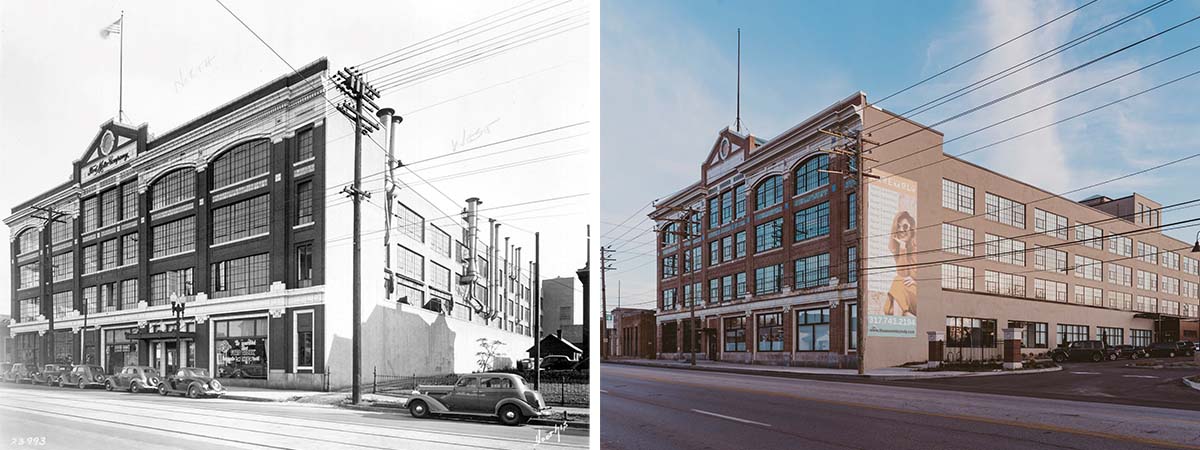Renovation Preserves Historic Façade Thanks to Quaker Windows

Left: The Old Ford building, a car manufacturing plant owned by Ford Motor Co., closed in 1942. Right: The renovated building, now a building for loft apartments called The Assembly.
The Assembly, a multifamily building in Indianapolis, Indiana, enjoyed a former life as The Old Ford Building, a car manufacturing plant. The redevelopment project used 600 of Quaker Windows & Doors’ historically accurate H600 fixed and awning windows to preserve the historical design, say officials.
The history
In the early part of the 20th century, motor cars were becoming a popular status symbol among Americans. As car production began to ramp up to meet growing demand, Ford Motor Co. decided to build an assembly plant in Indianapolis. Seattle-based architect John Graham was commissioned to design the four-story, reinforced-concrete factory.
Part of his design were huge windows, which would be necessary to allow plenty of natural light for workers. Construction was completed in the fall of 1914 and an official grand opening gala was held in March of 1915. The manufacturing plant produced over 500,000 cars over 18 years in production before it was officially closed in 1942.
After years of non-use and little or no maintenance, the Ford assembly plant had essentially become an eyesore by the time the 21st century has arrived. With the windows boarded up or bricked in, and the complex is general disrepair, the structure found itself on Indiana Landmarks' 10 Most Endangered List in 2016.
The renovation
That's when new ownership stepped in. They worked with Quaker to match existing window sightlines so they could obtain historic tax credits and restore the building back to its original beauty.
One of the challenges was in trying to match some of the very large original steel window designs. The largest single unit was 82 by 102 inches, and the largest multi-unit configuration contained six windows and was 353 3/8-inch wide by 100 7/16-inch tall. To accommodate the sizes, Quaker developed 2-by-6-inch vertical mullions.
